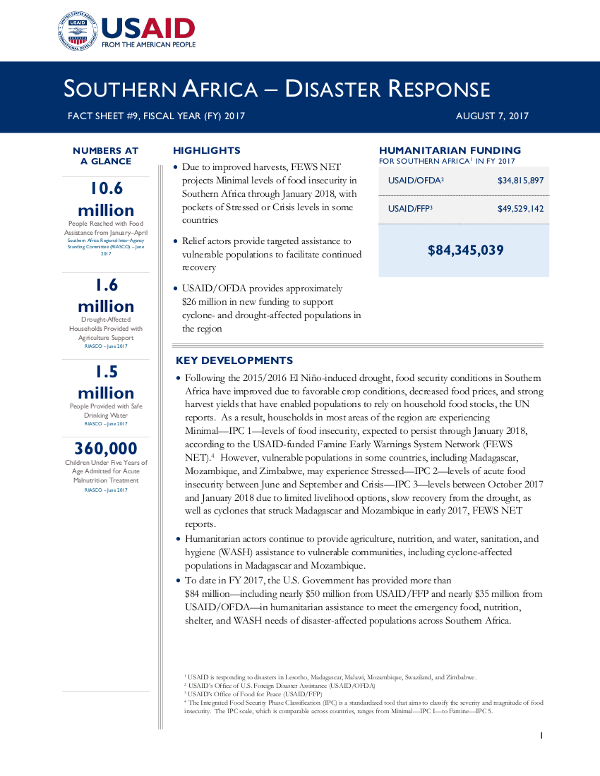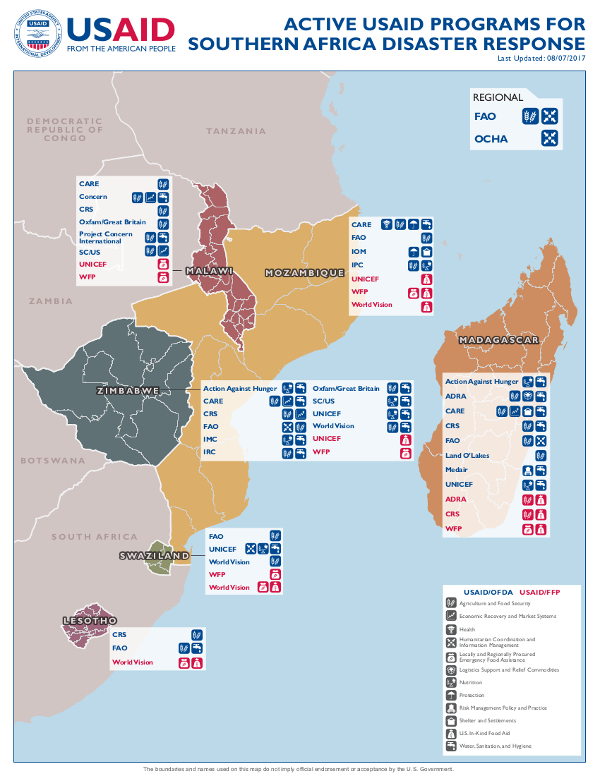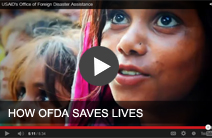- What We Do
- Agriculture and Food Security
- Democracy, Human Rights and Governance
- Economic Growth and Trade
- Education
- Ending Extreme Poverty
- Environment and Global Climate Change
- Gender Equality and Women's Empowerment
- Global Health
- Water and Sanitation
- Working in Crises and Conflict
- Disaster Assistance
- Political Transition Initiatives
- Conflict Mitigation and Prevention
- Countering Violent Extremism
- Disaster Risk Reduction
- Peacebuilding and Reconciliation
- Providing Safe & Secure Environments for Development
- Recovering From Crisis
- Resilience
- Tech Challenge for Atrocity Prevention
- World Humanitarian Day
- U.S. Global Development Lab
Latest Southern Africa Fact Sheet
Southern Africa Map - 08-07-2017 ![]() (pdf - 599k)
(pdf - 599k)
Key Developments
USAID’s Office of U.S. Foreign Disaster Assistance (USAID/OFDA) is responding to disasters in Lesotho, Madagascar, Malawi, Mozambique, Swaziland, and Zimbabwe.
Decreasing food prices, improved income levels, and increased availability of household food stores have substantially improved food security conditions in Lesotho. The USAID-funded Famine Early Warnings System Network (FEWS NET) projects Minimal—IPC 1—levels of food insecurity across Lesotho through September 2017 due to high crop production resulting in decreasing food prices and higher income levels.
The conclusion of Lesotho’s primary May-to-July harvesting period has enabled households to rely on food supplies from the harvest rather than humanitarian assistance. However, as household food stocks begin to deplete in October in advance of the December-to-March lean season and staple prices increase, some areas of the country may experience Stressed levels of food insecurity. FEWS NET predicts that nearly 225,000 people will likely experience food insecurity during the December–February peak lean season, but notes that this figure is significantly lower than average.
USAID's Office of U.S. Foreign Disaster Assistance (USAID/OFDA) is responding to a regional drought in Southern Africa. Please visit our webpage for additional information.
Background
Lesotho experiences erratic rainfall, recurrent droughts, and soil degradation, which can adversely affect food security. In addition to responding to urgent humanitarian needs, USAID/OFDA supports interventions to build the capacity of people in Lesotho to withstand disasters. For example, USAID/OFDA has supported programs to train emergency responders in Lesotho and supported initiatives to improve the land management and agricultural techniques of local farmers.
Most Recent Information Product(s)
- Africa DRR fact sheet (337kb PDF) and map (496kb PDF)










Comment
Make a general inquiry or suggest an improvement.